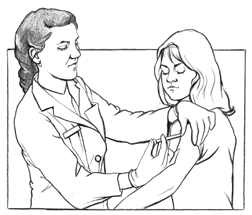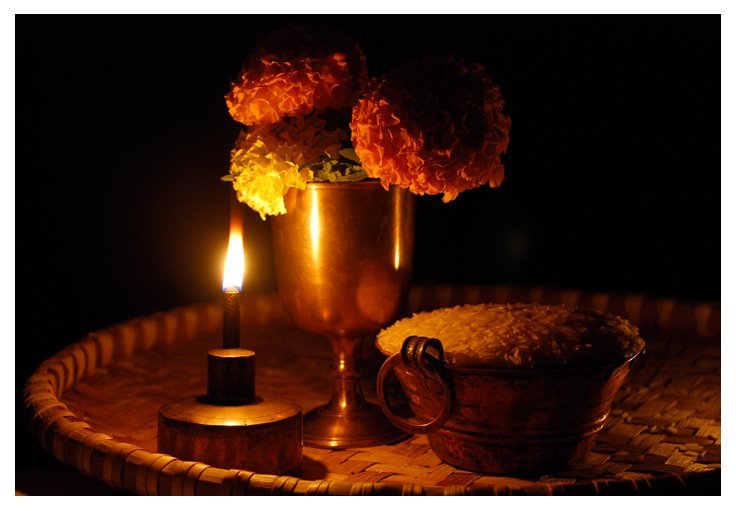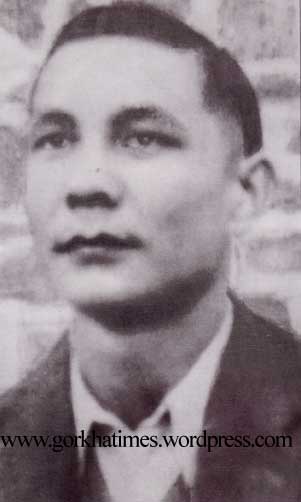Photo Feature Of Vaccination Camp At Gorkha High School Aizawl,Mizoram:-

Students of Gorkha High School being vaccinated under the watchful eyes of school teachers and staffs on 31st July 2009.Pic:Ramesh Khati

Students of Gorkha High School being vaccinated under the watchful eyes of school teachers and staffs on 31st July 2009,at the back more students waiting their turn.Pic:Ramesh Khati
Lets Try To Understand Facts And Myths About Hepatitis B
What is hepatitis B?
Hepatitis B is a liver disease. Hepatitis * means inflammation of the liver. Inflammation is the painful, red swelling that results when tissues of the body become injured or infected. Inflammation can cause organs to not work properly.
What is the liver?
The liver is an organ that does many important things.

Hepatitis B is a liver disease.
Hepatitis B is a liver disease.
The liver
-removes harmful chemicals from your blood
-fights infection
-helps digest food
-stores nutrients and vitamins
-stores energy
You cannot live without a liver.
What causes hepatitis B?
The hepatitis B virus causes hepatitis B. Viruses are germs that can cause sickness. For example, the flu is caused by a virus. People can pass viruses to each other.
Who gets hepatitis B?
Anyone can get hepatitis B, but some people are at higher risk, including people who were born to a mother with hepatitis B people who live with someone who has hepatitis B people who have lived in parts of the world where hepatitis B is common people who are exposed to blood or body fluids at work people on hemodialysis
people who have had more than one sex partner in the last 6 months or have a history of sexually transmitted disease
injection drug users men who have sex with men
How could I get hepatitis B?
You could get hepatitis B through contact with an infected person’s blood, semen, or other body fluid.
You could get hepatitis B from:-
-being born to a mother with hepatitis B
-having sex with an infected person
-being tattooed or pierced with unsterilized tools that were used on an infected person
-getting an accidental needle stick with a needle that was used on an infected person
-using an infected person’s razor or toothbrush
-sharing drug needles with an infected person

You could get hepatitis B from having sex with an infected person.
You cannot get hepatitis B from:-
-shaking hands with an infected person
-hugging an infected person
-sitting next to an infected person
What are the symptoms of hepatitis B?
Hepatitis B usually has no symptoms. Adults and children ages 5 and older sometimes have one or more of the following symptoms:
-yellowish eyes and skin, called jaundice
-a longer than usual amount of time for bleeding to stop
-swollen stomach or ankles
-easy bruising
-tiredness
-upset stomach
-fever
-loss of appetite
-diarrhea
-light-colored stools
-dark yellow urine
What is chronic hepatitis B?
Hepatitis B is chronic when the body can’t get rid of the hepatitis B virus. Children, especially infants, are more likely to get chronic hepatitis B, which usually has no symptoms until signs of liver damage appear. Without treatment, chronic hepatitis B can cause scarring of the liver, called cirrhosis; liver cancer; and liver failure.
Symptoms of cirrhosis include
-yellowish eyes and skin, called jaundice
-a longer than usual amount of time for bleeding to stop
-swollen stomach or ankles
-tiredness
-nausea
-weakness
-loss of appetite
-weight loss
-spiderlike blood vessels, called spider angiomas, that develop on the skin
How is hepatitis B diagnosed?
Hepatitis B is diagnosed through blood tests, which can also show if you have chronic hepatitis B or another type of hepatitis.
Your doctor may suggest getting a liver biopsy if chronic hepatitis B is suspected. A liver biopsy is a test for liver damage. The doctor uses a needle to remove a tiny piece of liver, which is then looked at with a microscope.

Blood is drawn for hepatitis B testing.
How is hepatitis B treated?
Hepatitis B usually is not treated unless it becomes chronic.
Chronic hepatitis B is treated with drugs that slow or stop the virus from damaging the liver. The length of treatment varies. Your doctor will help you decide which drug or drug combination is likely to work for you and will closely watch your symptoms to make sure treatment is working.
Drugs given by shots include
-interferon
-peginterferon
Drugs taken by mouth include
-lamivudine
-telbivudine
-adefovir
-entecavir
Liver Transplantation
A liver transplant may be necessary if chronic hepatitis B causes liver failure. Liver transplantation surgery replaces a failed liver with a healthy one from a donor. Medicines taken after surgery can prevent hepatitis B from coming back.
How can I avoid getting hepatitis B?
You can avoid getting hepatitis B by getting the hepatitis B vaccine.
Vaccines are medicines that keep you from getting sick. Vaccines teach your body to attack specific germs. The hepatitis B vaccine teaches your body to attack the hepatitis B virus.

The hepatitis B vaccine protects you from infection.
Adults at higher risk of getting hepatitis B and all children should get the vaccine. The hepatitis B vaccine is given through three shots over a period of several months. There is no minimum age for vaccination. The second shot should be given at least 1 month after the first, and the last shot should be given at least 2 months after the second shot but no sooner than 4 months after the first. The hepatitis B vaccine is safe for pregnant women.
You need all three shots to be fully protected. If you are traveling to a country where hepatitis B is common, try to get all the shots before you go. If you don’t have time to get all the shots before you go, get as many as you can. One shot may provide some protection against the virus.
You can also protect yourself and others from hepatitis B if you:-
-use a condom during sex
-do not share drug needles
-wear gloves if you have to touch another person’s blood
-do not borrow another person’s toothbrush, razor, or anything else that could have blood on it
-make sure any tattoos or body piercings you get are done with sterile tools
-do not donate blood or blood products if you have hepatitis B

Wear gloves if you have to touch another person’s blood.
What should I do if I think I have been exposed to the hepatitis B virus?
See your doctor right away if you think you have been exposed to the hepatitis B virus. The first shot of the hepatitis B vaccine taken with a medicine called hepatitis B immune globulin may prevent you from getting sick.
If you are at higher risk of hepatitis B, get tested. Many people do not know they are infected. Early diagnosis and treatment can help prevent liver damage.
Points to Remember
-Hepatitis B is a liver disease caused by the hepatitis B virus.
-Anyone can get hepatitis B, but some people are at higher risk.
-You could get hepatitis B through contact with an infected person’s blood, semen, or other body fluid.
-Hepatitis B usually has no symptoms.
-Adults and children ages 5 and older sometimes have jaundice or other symptoms.
-Hepatitis B usually is not treated unless it becomes chronic.
-Hepatitis B is chronic when the body can’t get rid of the hepatitis B virus.
-Children, especially infants, are more likely to develop chronic hepatitis B.
-Chronic hepatitis B is treated with drugs that slow or stop the virus from damaging the liver.
-You can protect yourself from getting hepatitis B by getting the hepatitis B vaccine.
-See your doctor right away if you think you’ve been exposed to the hepatitis B virus.
-If you are at higher risk of hepatitis B, get tested.
Many people do not know they are infected. Early diagnosis and treatment can help prevent liver damage.
-Article Courtesy:National Institute of Diabetes and Digestive and Kidney Diseases (NIDDK)

































